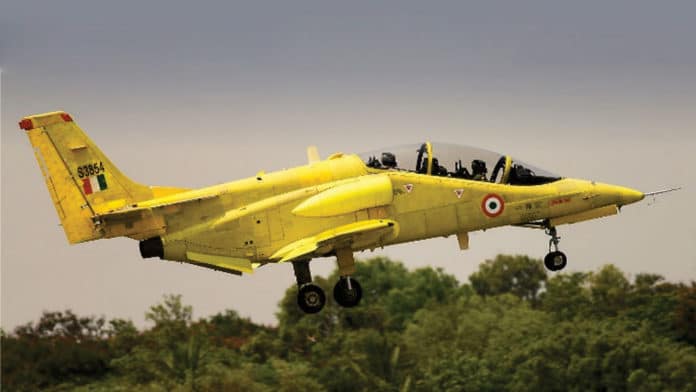Hindustan Aeronautics Limited (HAL) has started the spin testing of the HAL HJT-36 Sitara, a subsonic intermediate jet trainer aircraft designed and developed for the Indian Air Force and the Indian Navy. It is expected to replace the aging Kiran Jet trainer aircraft, which the Indian Air Force has been using for Stage 2 training of rookie pilots for decades.
The modified Intermediate Jet Trainer (IJT) started spin flight testing on Monday in Bengaluru. The HJT-36 Sitara will be able to perform complex aerobatic maneuvers, primarily the “barrel”. It has already been tested for parameters like altitude, speed, and load factor.
The development of the Indian HJT-36 trainer has been going on with varying success since 1997. The aircraft is being created as part of a program to reduce the Indian armed forces’ dependence on imported weapons and military equipment. The first flight of the HJT-36 took place in 2003. In 2014, experts identified a significant overweight of the aircraft and turned to several foreign companies with a request for assistance in reducing the aircraft’s weight. Some deficiencies in the IJT’s spin handling during 2016 caused a three-year delay in the program during which redesign work took place. The aircraft only took to the air again in April 2019.
On the modified aircraft, HAL specialists slightly moved the vertical tail aft and extending the rudder surface. These changes for ensuring a satisfactory spin behavior required an extensive redesign of the rear fuselage and the rudder. The changes have been incorporated into two aircraft with the involvement and clearance from certification agencies at every stage.
“These aircraft have now been incorporated with the necessary safety devices (Anti-Spin Parachute Systems). During the first flight, the aircraft was initially taken through one turn spin to the left and right-hand sides to test the spin characteristics,” says the company.
The HAL HJT-36 Sitara is 11 meters long and has a 10-meter wingspan. The maximum take-off weight of the aircraft is 5,400 kg. The intermediate jet trainer can reach speeds of up to 750 km/h (466 mph) and fly over distances of up to 1,000 km (621 miles). It has five external hardpoints for weapons-training. There is one center-line hardpoint under the fuselage and two-weapon pylons under each wing for carrying rockets, gun pods, and bombs. The maximum external payload is 1,000 kg.
In addition to the HJT-36, India is currently developing the HAL HTT-40 for initial flight training. This aircraft has been undergoing flight tests since 2016.
